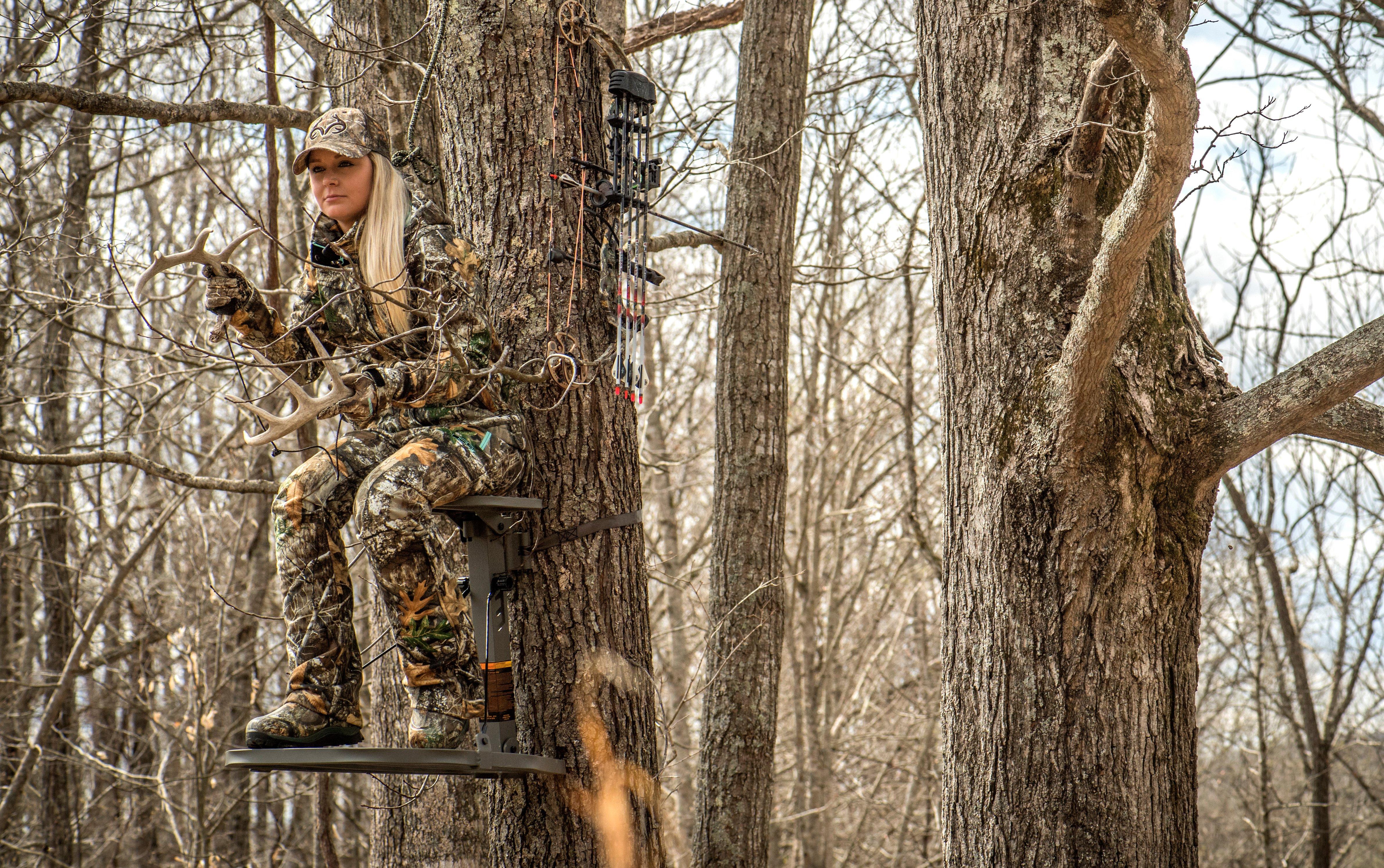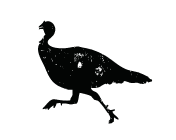Don’t hang up the horns just yet. Aggressive rattling can lure in a great post-rut deer

Don’t overlook a good rattling sequence during the late season. Bucks cruising for the last estrous does are primed to come to a fake fight. Image by Bill Konway
One chilly, still morning in early December, we hiked down into a canyon near the Cimarron River in western Oklahoma and set up on a rocky outcropping. As pink dawn broke, my friend Kenny hissed, “Buck in the river.”
I studied the deer, which was an old fellow with a bull chest, thin hips and a gray face. I hadn’t looked at his rack yet, but I knew he was a shooter — at least 5-½ years old.
“Eight-pointer, gnarly,” Kenny said from behind his binoculars. “He’ll be on our side of the river in a few steps.”
The old warrior stepped out of the misty river and disappeared into thick brush. He popped out 250 yards away, and I was fixing to set up a long poke.
Whack, thwack, whack. “Urrrrppp.”
I peeked at Kenny, who worked his rattling horns furiously and tossed in a few loud gurgle grunts for good measure.
The old buck turned our way and marched in, hair bristling on his spine, face a white halo in the morning sun. Two hundred yards, 150, 90 … . My 140-grain bullet drove him into the sandbar.
Rattling Science
Several years ago, renowned whitetail scientist Mickey Hellickson conducted an intensive three-year study in Texas on the movements and behaviors of mature whitetail bucks. Part of that project produced groundbreaking data on antler rattling.
Hellickson and crew found that although the peak of the rut is the best time to rattle in the most bucks, especially immature ones, the first weeks of the post-rut can be a better time to rattle in mature deer. Of the 29 bucks that responded to the researchers’ 51 post-rut rattling sequences, 10 were 3-½ to 4-½ years old, and another 10 were 5-½-plus. “When mature bucks cruise for the last estrous does of the year, they are primed to come to antler rattling,” Hellickson said.
Rattling Tips for the Late Season
In the post-rut, rattling works best on private land where hunting pressure has been fairly light all season. I prefer a simple ground setup this time of year. Slip in and hide on a hill or bluff with some elevation and good visibility, and rattle once or twice every 20 minutes. Set down the horns, be still and watch for a buck circling in through the woods or brush below.
During the Oklahoma hunt I mentioned, it was a cold, still morning. You’ll have your best luck by far rattling in the mornings. This has played out so many times for me that I rarely carry horns in the afternoon any more. The science confirms it. In Hellickson’s study, 60 of 111 bucks the researchers ratted in came to the horns from 7:30 to 10:30 a.m. Cool mornings with 75 percent cloud cover and little or low wind were best.
“If your arms aren’t exhausted after a rattling sequence, you didn’t hit the horns hard enough,” Hellickson said. In his study, the crew rattled aggressively 85 times and attracted 81 bucks. Their 86 shorter, quieter sequences pulled in only 30 deer. The length of a rattling session didn’t matter. One- and three-minute volleys lured an equal number of bucks.
Remember that. If you’re going to rattle, the fun of it is to bang and grind the horns, bust and rake brush, and make one heck of a racket. Then sit back quietly in anticipation of what might happen, like a big old deer homing in on your faux fight one cold, still morning this December.
Don’t Miss: IS THE SECOND RUT EVEN REAL?











































